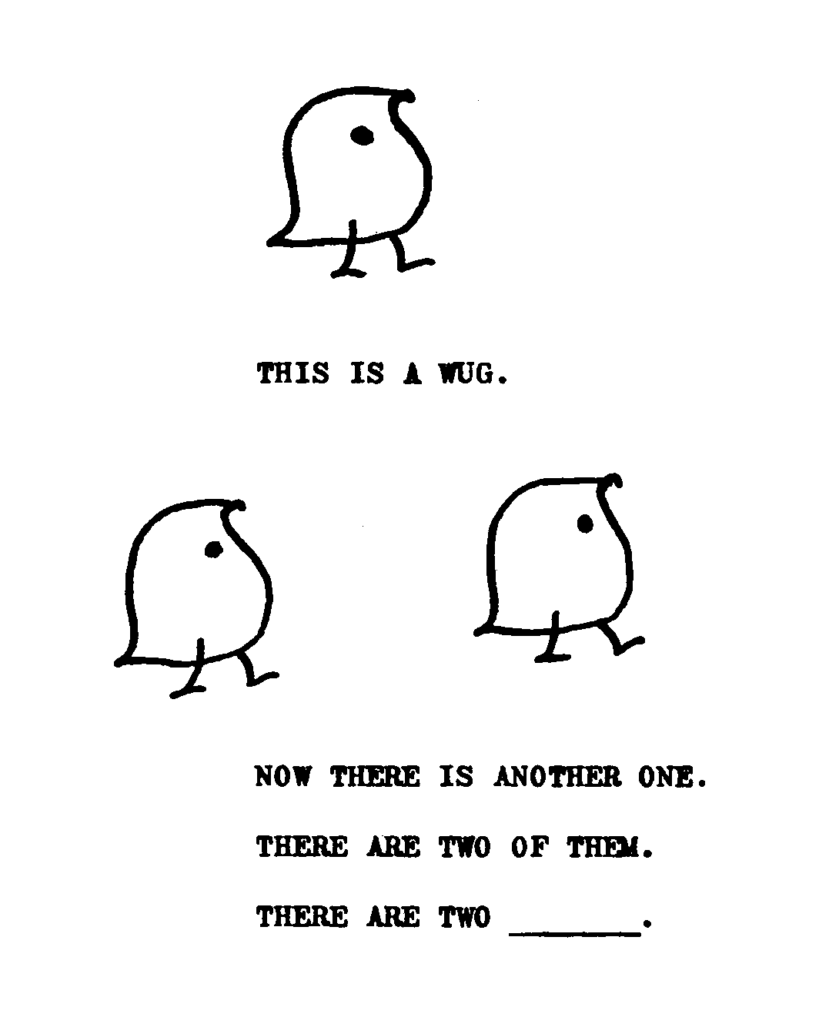The Wug Test is a foundational study in how language develops in children. It’s also a bit cute:

Developed by Jean Berko Gleason in the 1950s, it’s been said that the only thing with a greater impact on the field of child language research was the innovation of the tape recorder.
Gleason’s major finding was that even very young children are able to connect suitable endings to nonsense words they have never heard before, implying that they have internalized systematic aspects of the linguistic system which no one has necessarily tried to teach them. However, she also identified an earlier stage at which children can produce such forms for real words, but not yet for nonsense words—implying that children start by memorizing singular–plural pairs they hear spoken by others, then eventually extract rules and patterns from these examples which they apply to novel words.
The Wug Test was the first experimental proof that young children have extracted generalizable rules from the language around them, rather than simply memorizing words that they have heard. […] Its conclusions are viewed as essential to the understanding of when and how children reach major language milestones.
Browsing summaries of Gleason’s other research on her Wikipedia entry is fascinating, especially when thinking of helping my children learn language ‘routines’. It’s worth a quick browse.
